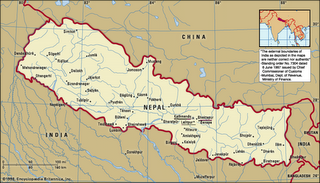KATHMANDU VALLEY-Nepal
 The Kathmandu Valley contains three cities – Kathmandu (population 600,000); Patan
The Kathmandu Valley contains three cities – Kathmandu (population 600,000); Patan( pp. 200,000); and Bhaktapur. Kirtipur and Thimi are two other smaller municipalities. There are seven UNESCO World Heritage Sites in the Valley. The Valley was once a lake. According to legend, a Buddhist saint named Manjushree drained out the waters by slashing a passage through the hills and peopled it with his followers. Over the millenniums, a refined urban civilization emerged, built on a unique synthesis of Hinduism and Buddhism. Dynasties came and went. Commerce and craft flourished.
KATHMANUDU
Durbar Square (World Heritage Site). This complex of palace buildings, courtyards and pagoda temples, build between 12th and 19 th centuries, used to be the seat of the ancient Malla kings of Kathmandu. It is urban and ceremonial focal point of the city.
Pashupatinath Temple (World Heritage Site). One of the holiest Hindu shrines in the world. Pashupatinath lies 5 km to the east of the city center. The fabulous pagoda houses the linga (phallic symbol) of the Lord Shiva.
Swayambhu Stupa (World Heritage Site) watches over the Valley from the top of a hillock to the west. One of the holiest Buddhist sites in Nepal, its establishment is linked to the creation of the Kathmandu Valley. You can get a very good view of Kathmandu from here.
Changu Narayan Temple (World Heritage Site) is situated at the end of a ridge that sticks out into the Valley, about 12 km east of Kathmandu. It is dedicated to the Hindu go Bishnu. One of the oldest specimens of pagoda architecture, the temple is embellished with exquisite wood and stone carvings.
Balaju consists of a sprawling garden of stone water spouts, religious shrines, fish ponds and a replica of the statue of Budhanilkantha. It is situated below Nagarjun hill about
3 km northeast of the city center.
Budhanilkanth, or Shivapuri hill at the northern end of the Valley, about 9 km from the city center. There is a pond in the middle of which lies an immense stone figure of the Hindu god Bishnu reclining on the coils of a serpent.
Bouddhanath Stupa (World Heritage Site) lies 6 km to the east of downtown. Many monasteries here provide excellent exposure to Tibetan culture. The Bouddha Area Preservation & Development Committee offers information to visitors.
Asan market square is located midway on the diagonal thoroughfare linking Darbar Square with Durbar Marg. The bazaar is a swirl of color against a backdrop of temples and open-fronted shops. Narrow lanes radiate out leading to mysterious courtyards.
PATAN
Durbar Square (World Heritage Site), an enchanting mélange of palace buildings, courtyards and pagoda temples, is the centre of Patan’s religious and social life.
The Central Zoo in Jawalakhel contains about 106 birds and over 665 different animals. There is a where you can go boating and also you can have elephant ride.
Mahaboudha. This Buddhist monument is an excellent example of terra cotta art form which points to the skill of Patan’s ancient craftsmen with a variety of building styles.The 14th-centuary monument’s obelisk-like design is also unusual in a city of pagoda roofs.
Kwa Bahal, or the Golden Temple, is a Buddhist monastery courtyard dating to the 12th century. Located 200 metre north and west of Durbar Square, it is embellished with exceptionally fine wood-carving work. Artistic images are scattered around the courtyard.
Kumbheswar. Build in 1392, this Shiva temple is the oldest temple in the city. It is also one of the only three in the Valley with fine roofs. The water in the two ponds here is believed to originate in the holy Gosaikund Lake, several days’ walk to the north.
BHAKTAPUR
Durbar Square (World Heritage Site). This former royal palace complex offers the elegant 15th-century Palace of 55 Windows, artistic courtyards, the Golden Gate, are masterpiece in every way, and an entrancing medley of pagoda temples scattered all over.
Taumadhi Square lies to the east of Durbar Square reached by a brick-paved lane. The five-roofed Nyatapol temple (built in 1702) here soars gracefully into the sky from atop a five-level plinth. The stairway leading up to the temple is flanked with stone figures of deities and mythical beasts.
Tachapal Square or Dattatreya, at the hub of a maze of streets lined with richly ornamented houses, presents an entrancing ambiance. The heart of uptown, it is the original centre of Bhaktapur. The Peacock Window is set into the wall of a Hindu monastery here known as Math.
Surya Binayak is a very popular pilgrimage and picnic spot. Situated in a forest to the south of Bhaktapur, it is a 20-minute walk from the trolley bus terminal. The temple, dedicated to the Hindu deity Ganesh, is crowed especially on Tuesdays and Saturdays.
Labels: 2006, 26 Novemember


<< Home